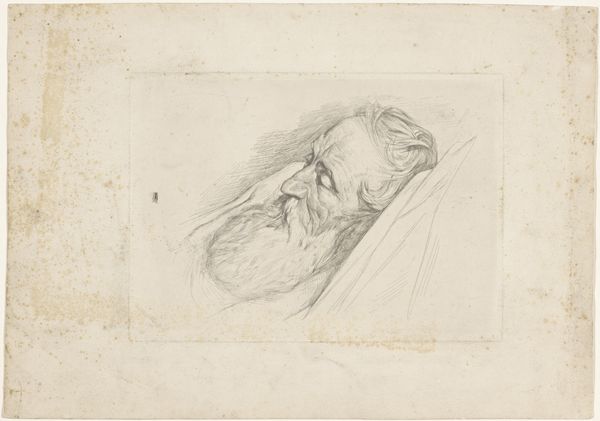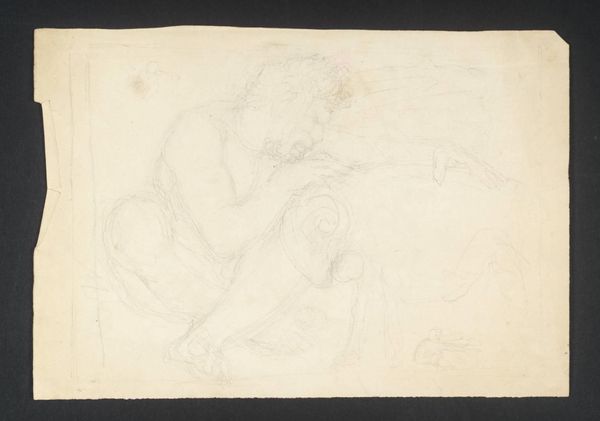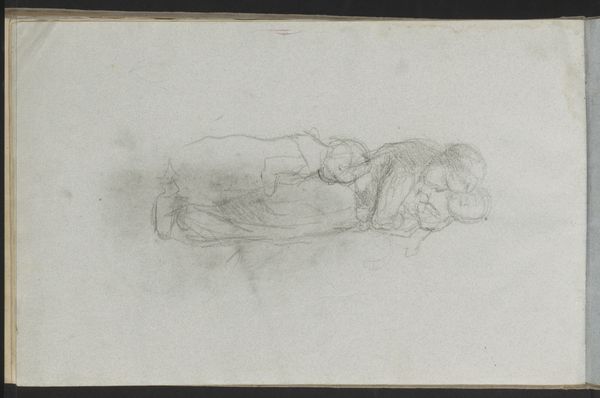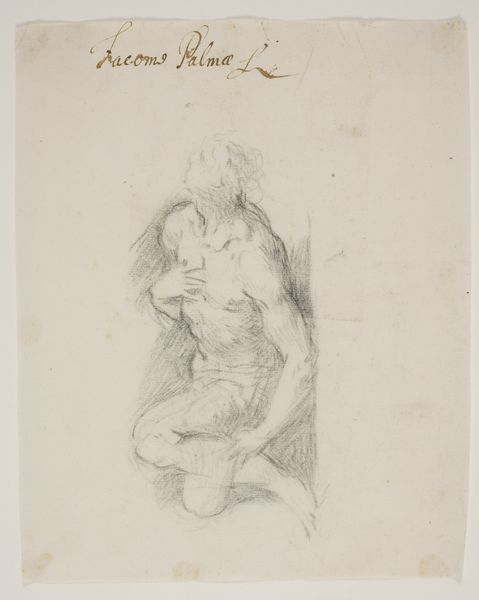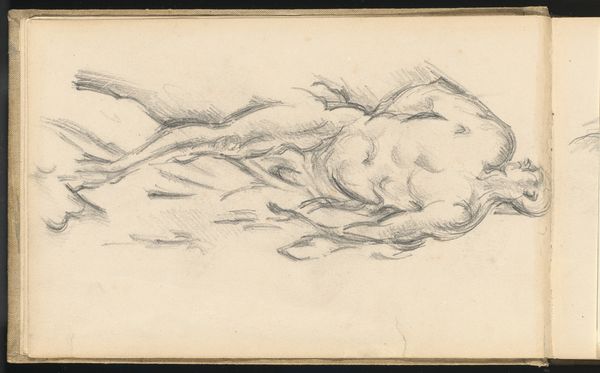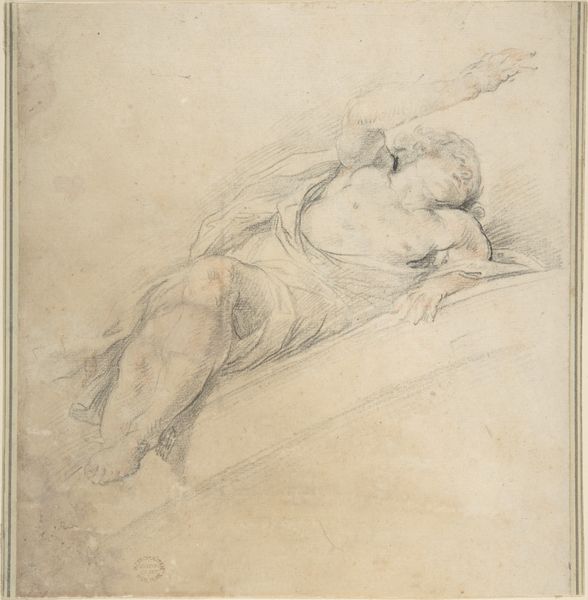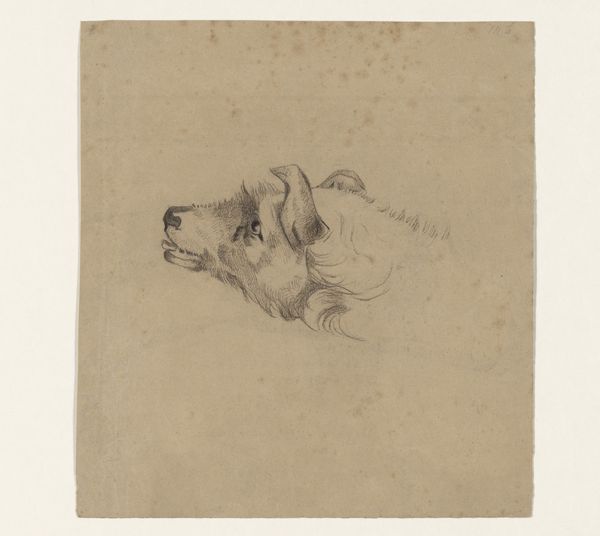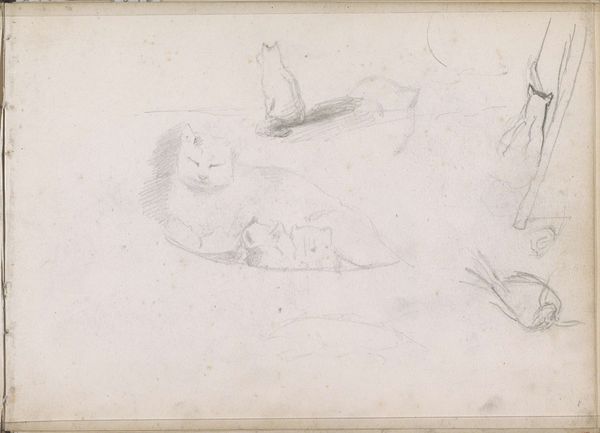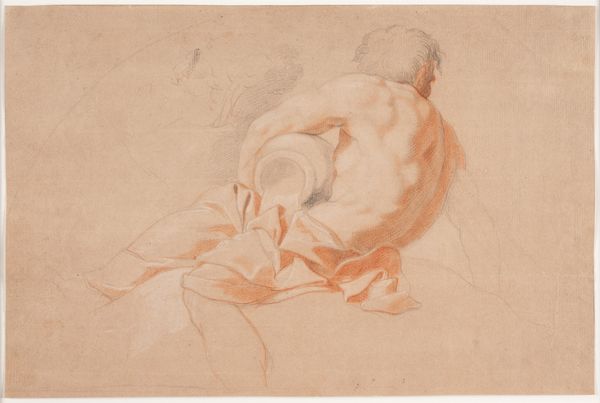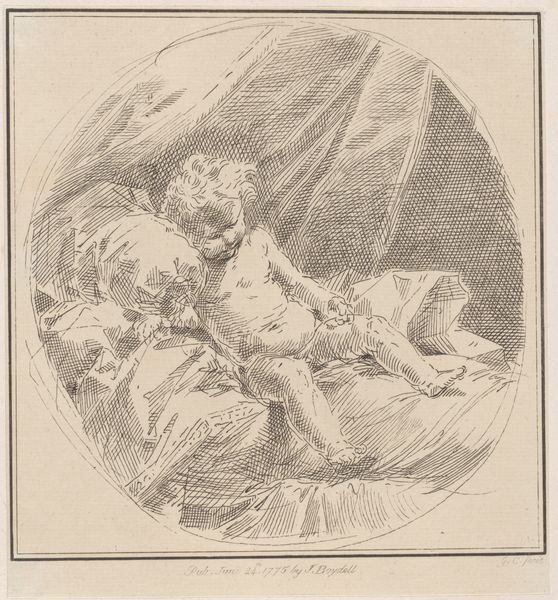
drawing, pencil
#
portrait
#
drawing
#
pencil
#
academic-art
#
realism
Dimensions: 143 mm (height) x 191 mm (width) (bladmaal)
Editor: Here we have "A Child in its Cradle," a pencil drawing from 1852 by Elisabeth Jerichau Baumann, currently residing at the Statens Museum for Kunst. The drawing has soft lines and evokes a delicate sense of calm. How would you interpret this work from a formal perspective? Curator: Thank you. Immediately, the composition invites examination. Notice how Baumann employs subtle tonal variations to create depth within a predominantly linear framework. The varying pressure applied to the pencil gives the fabric around the child dimension, doesn't it? This is strategic use of line to delineate form. Editor: It's interesting that you point that out; I was immediately drawn to how little contrast there actually is. How does the uniformity impact our reading of the piece? Curator: Indeed. The subdued contrast serves to flatten the pictorial space, concentrating our focus upon the implied volumes of the figure. Consider the strategic deployment of shading—its contribution to the subject’s round cheek, for instance. We can see Baumann guiding our eye through controlled applications of tone and shadow. Editor: That's a fascinating reading! I was really stuck on seeing the image as just the portrayal of peace, but now I'm able to consider the more strategic use of line and shading. Curator: Absolutely. Reflecting upon the subtle dialogue of the lines within this seemingly quiet piece shows us how technical facility serves and enhances affective meaning. I’ve learned as well how to read a drawing closely.
Comments
No comments
Be the first to comment and join the conversation on the ultimate creative platform.
